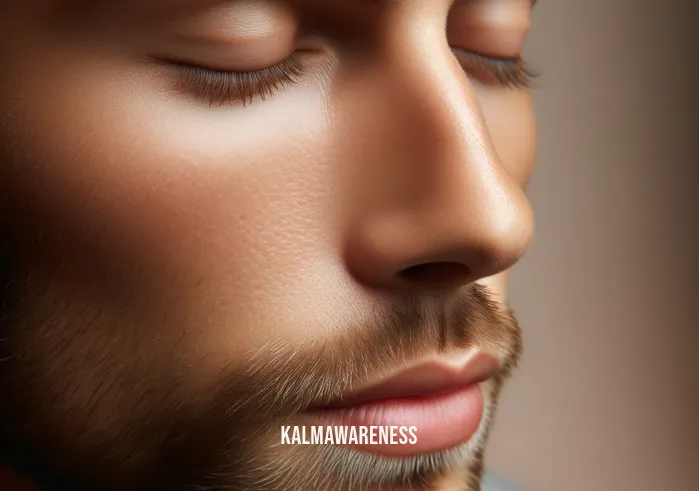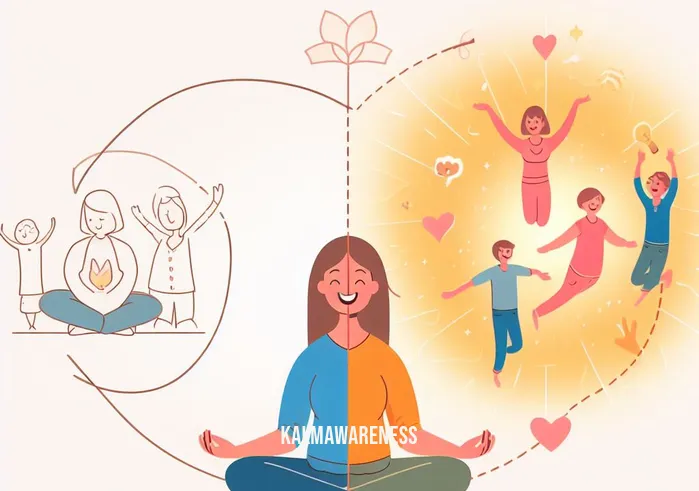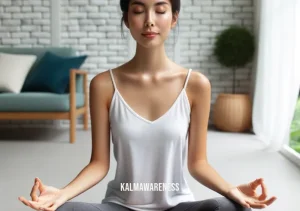Can You Meditate Lying Down? The Power and Possibility of Prone Meditation
Introduction to Lying Down Meditation
The journey towards inner peace often begins in a seated position, typically on a cushion or chair, in silence or with guided cues. But what if your quest for tranquility begs the question, “can you meditate lying down?” The answer is not just a simple ‘yes’ or ‘no’. It involves a multi-layered understanding of meditation, body posture, and mindfulness. In this article, we will delve into the nuances of prone meditation, exploring its connection to relaxation, mindfulness, reclining, and rest.
Why Would You Want to Meditate Lying Down?
There are multiple reasons why one might prefer to meditate in a prone position. It may be due to physical discomfort in traditional seated meditation, a desire to combine mindful movement and sleep, or even the inclination to experiment with different postures to achieve various states of consciousness. Regardless of the reason, the main goal is to attain a state of mindfulness that involves attaining a peaceful state of mind in which thoughts are not occupied by worry.
The Importance of Breathing and Relaxation
Breathing is the cornerstone of most meditation techniques. Whether you are sitting upright or lying down, the focus on breath allows for deeper connection with the present moment. Jack Kornfield, a renowned meditation teacher, emphasizes the role of breath as an anchor in meditation. Lying down can offer an enhanced experience of relaxation, enabling you to feel the rise and fall of your breath more profoundly. This relaxation effect is vital for those interested in sustainable self-care.
Quote: “The posture makes the master. Be it prone, seated, or standing—your posture is the doorway to your meditation experience.” – Jack Kornfield
A Range of Lying Down Meditation Techniques
- Mindful Breathing: Lie down and focus on your breath, perhaps adding an element of 256 Hz sound therapy to deepen the experience.
- Body Scan: Starting from your toes, move your attention upwards, possibly incorporating techniques to touch that body part mindfully.
- Guided Visualization: Use audio guides or mental images to transport your mind to a serene place.
- EMDR Meditation: Lying down can be especially effective for Eye Movement Desensitization and Reprocessing meditation, which helps process traumatic memories.
For Whom Is Lying Down Meditation Most Suited?
- People with Physical Limitations: Those who find it difficult to sit for extended periods can benefit from prone meditation.
- Expectant Mothers: Techniques like mindful hypnobirthing can be more comfortably practiced while lying down.
- Adolescents: Considering the busy and often chaotic schedules of young adults, prone meditation can be a go-to method, especially if it involves walking meditation adapted for teenagers.
Summary
Meditating while lying down is not only possible but offers a wealth of benefits, particularly for those who find traditional seated postures challenging. It provides an excellent alternative while still promoting mindfulness, relaxation, and focused breathing. However, it’s essential to keep in mind the definition of meditation as a practice that enables mindfulness and not just a shortcut to sleep or rest.
In the next chapter, we’ll further examine the pros and cons of prone meditation, including its potential pitfalls such as falling asleep and how to mitigate them. So if you’ve ever pondered, “can u meditate lying down”, continue reading to learn more about this intriguing method.

The Subtleties and Complexities of Meditating While Lying Down
The Nuances of Positioning: From Reclining to Resting
As we explore the question, “can you meditate lying down,” we delve into the complexities that accompany this form of meditation. The prone position can range from fully reclined to semi-reclined, and the subtleties in these angles can influence your meditation experience. Whether it’s a 15-minute power nap to rejuvenate your senses or a deeper, mindful practice to enhance relaxation, the angle at which you recline plays a significant role.
Table: Comparing Types of Lying Down Meditation
| Type of Meditation | Angle of Recline | Benefits | Potential Pitfalls |
|---|---|---|---|
| Yoga Nidra | Fully Flat | Deep Relaxation, Stress Relief | Risk of Falling Asleep |
| Mindful Hypnobirthing | Slightly Elevated | Better Focus, Eases Labor Pains | May Require More Physical Support |
| EMDR Meditation | Varies | Helps with Emotional Healing | Could Trigger Memories |
| Guided Visualization | Fully Flat or Elevated | Enhances Creativity, Reduces Anxiety | Might Induce Drowsiness |
| Mindful Breathing | Fully Flat | Helps in Deepening Breath, Promotes Calmness | Could Get Monotonous |
Advantages and Limitations: A Balanced View
Lying down meditation is not a one-size-fits-all solution. As outlined in the table, each type offers unique advantages and potential pitfalls. While Yoga Nidra may offer deep relaxation, there’s a risk of drifting into sleep. On the other hand, EMDR meditation helps with emotional healing but could also trigger memories, requiring a supportive environment or professional guidance.
Pros
- Convenience: Easily done anytime, anywhere, especially if you find it challenging to sit for long periods.
- Versatility: From rouse yoga to guided visualization, the prone position is compatible with a range of meditation styles.
- Physical Comfort: Offers relief from back pain and helps with posture issues.
Cons
- Distraction: The comfort of lying down can make it easy to pretty soon drift off into a nap rather than focusing on meditation.
- Physical Limitations: Might not be suitable for everyone, including those with certain spinal or respiratory issues.
Techniques to Stabilize Your Meditation Practice
It’s crucial to be mindful of the factors that can stabilize your practice. The concept of stabilization is not just physical but also mental. Learning how to spell “stabilize” your thoughts is as essential as maintaining a comfortable posture. Here are some tips:
- Use Props: Cushions or pillows can offer the necessary support.
- Set an Intention: Just as in any form of meditation, setting an intention helps you stay focused.
- Timed Practice: Consider using an app or timer, aiming for one meditation session for each blessed day.
- Guidance: Seek guidance through instructional videos, guided audio, or even an element of some meditation exercises to maintain a disciplined approach.
Summary and What’s Next
Understanding the complexities of lying down meditation can help you reap the benefits while mitigating the challenges. Knowing the angles, types, and both pros and cons gives you a well-rounded view. It’s an enriching experience if done with proper understanding and technique.
In the next chapter, we’ll delve into the science and research behind prone meditation. What does scientific evidence say about the efficacy of lying down during meditation? Can it genuinely enhance your mindfulness practice, or is it merely a placebo effect? We’ll unpack these questions and more, so continue reading to deepen your understanding of this intriguing topic.
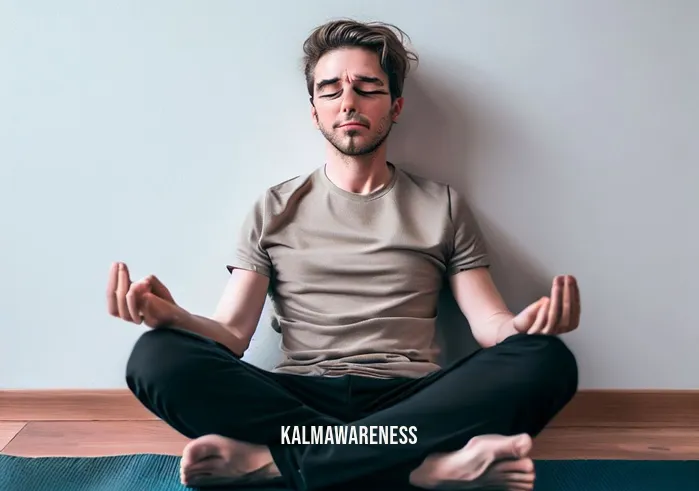
A Beacon of Serenity: The Inspirational Facets of Lying Down Meditation
Unveiling the Power of Stillness
Can you meditate lying down? The answer echoes resoundingly as a beacon of hope for many who seek solace in the simplicity of stillness. When your body reclines, your mind ascends, defying the gravitational pull of everyday worries and stresses. By assuming a prone position, you unveil a meditative canvas that is both comforting and challenging, enabling mindfulness and relaxation.
“In stillness, the world resets itself.”
- Unknown
A Path to Sustainable Self-Care
The beauty of lying down to meditate is that it adds a sustainable component to your self-care regimen. While the term ‘sustainability’ often refers to the environment, the concept can also extend to how we manage our wellbeing. A sustainable self-care routine is about adopting practices that you can maintain over the long term. And what could be more sustainable than something as simple as lying down, a position that can be easily accommodated in various settings, whether you’re walking or simply taking a moment to pause?
“Caring for myself is not self-indulgence, it is self-preservation, and that is an act of political warfare.”
- Audre Lorde
The Alchemy of Breathing and Letting Go
For many people, the allure of lying down to meditate comes from the increased focus it allows on the act of breathing. It enables you to concentrate on your breath as you would in sitting meditation, but without the distractions of physical discomfort. As you lie down, breathing becomes not just a necessity but an act of conscious engagement, helping you attain a peaceful state of mind where thoughts are not occupied by worry.
“Just breathe. Ten tiny breaths … Seize them. Feel them. Love them.”
- K.A. Tucker
Reframing the Debate: A Judgment of the Wise
The question, “Can you meditate lying down?” often evokes mixed opinions. Some traditionalists might argue that the supine position is not conducive to a ‘serious’ meditation practice. But this perspective, often a judgment of the wise, doesn’t hold water in the face of the benefits reaped by countless individuals who’ve found genuine comfort and mindfulness in this position.
“The body benefits from movement, and the mind benefits from stillness.”
- Sakyong Mipham
Summoning Transformation: One Breath at a Time
Finally, lying down meditation is a transformative journey that begins and ends with you. Each inhale summons change, and each exhale releases the old, making room for new opportunities and experiences. The process is an echo of the cycles of life itself, where transformation is the only constant.
By choosing to meditate lying down, you are opening doors to a practice that is versatile, accessible, and, above all, deeply human. It’s a choice that celebrates both self-acceptance and the evergreen hope of transformation, qualities that make us uniquely human and eternally resilient.
“The best way to capture moments is to pay attention. This is how we cultivate mindfulness. Mindfulness means being awake. It means knowing what you are doing.”
- Jon Kabat-Zinn
Next Chapter Sneak Peek
Having journeyed through the inspirational landscape of lying down meditation, it’s time to focus on the scientific backing that supports this practice. Are the benefits purely anecdotal, or do they stand up to scientific scrutiny? In the next chapter, we’ll look at empirical studies that answer these questions and more. Continue reading to uncover the science that validates—or perhaps challenges—the effectiveness of lying down meditation.
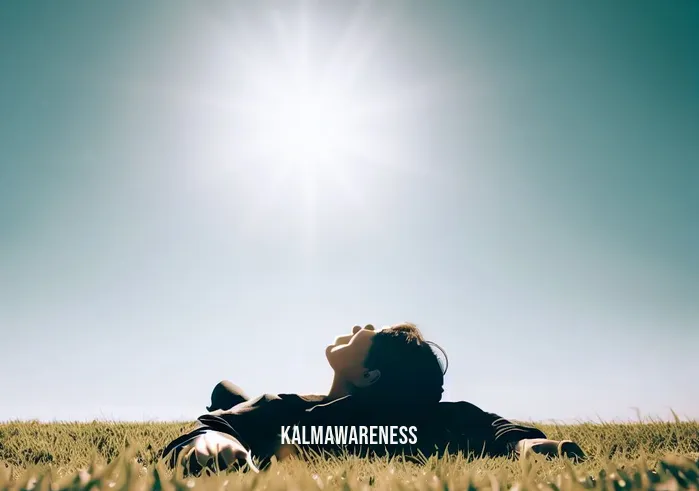
The Anatomy of Stillness: Understanding Lying Down Meditation from the Ground Up
Building the Foundation: What You Need to Know
As we continue to explore the intriguing question, “Can you meditate lying down?”, it’s essential to dig deeper into the mechanics and nuances of this unique form of meditation. Lying down meditation—or supine meditation, if you prefer the technical term—is more than just a simplistic form of relaxation; it’s an intricate blend of mindfulness, relaxation, and conscious breathing. Let’s break down the elements that make this practice so enriching, both for the mind and the body.
Essential Elements of Lying Down Meditation
- Positioning: Properly positioning your body is crucial. Your spine should be straight, and your limbs relaxed to allow for an unobstructed flow of energy.
- Breathing: As with other forms of meditation, breathing is central to the practice. When you’re lying down, you have the freedom to focus more on breathing and meditation without being distracted by bodily discomfort.
- Mindfulness: Paying attention to your thoughts and sensations helps you become more aware. It’s not just about lying down; it’s about being in that moment, fully.
- Sensory Activation: While lying down, you can also engage in EMDR meditation or similar techniques that activate various senses to enhance the experience.
- Duration: The time you dedicate to this form of meditation can vary from a quick power nap to extended periods of deep reflection.
How Lying Down Meditation Differs from Sitting Meditation: A Comparative Table
| Aspect | Lying Down Meditation | Sitting Meditation |
|---|---|---|
| Body Alignment | Spine is in a natural, relaxed line | Requires a more rigid posture |
| Ease of Practice | More accessible for beginners | Might require some initial training |
| Focus on Breath | Easier to focus on breath | Could be distracted by body pain |
| Energy Flow | More relaxed energy dynamics | Requires conscious alignment |
| Flexibility in Timing | Can be incorporated into daily naps | Generally requires dedicated time |
Harnessing the Power of Mindful Movement
In a lying down position, the possibility of incorporating mindful movement into your meditation practice opens up. As you recline, consider a simple rotation of your ankles or wrists, or perhaps a gentle arching of your back. These small movements become a vital element of your meditation exercise, enabling a more dynamic form of mindfulness.
Advantages and Considerations
When you decide to meditate in a supine or reclining position, you’re not just choosing an easier route. You’re opting for a different set of advantages and considerations that uniquely complement your lifestyle and emotional state. For instance, if you suffer from lower back pain, lying down can offer more comfort and less strain than sitting. On the flip side, the comfort could lead to falling asleep, which may or may not be your intended outcome.
Advantages:
- Comfort and ease
- Less physical strain
- Ideal for people with certain medical conditions
- Enhances focus on breath
Considerations:
- Risk of falling asleep
- May require props or cushioning for optimal alignment
- Needs conscious effort to maintain mindfulness
Preview of the Final Chapter
So far, we’ve delved into the intricacies and comparative advantages of lying down meditation. But you may still be wondering: Is there any empirical evidence to back all this up? In the next chapter, we’re going to examine the scientific research behind lying down meditation. You’ll discover the data that either debunks or validates this practice, adding another layer to your understanding. Be sure not to miss the grand conclusion of our exploration into lying down meditation.
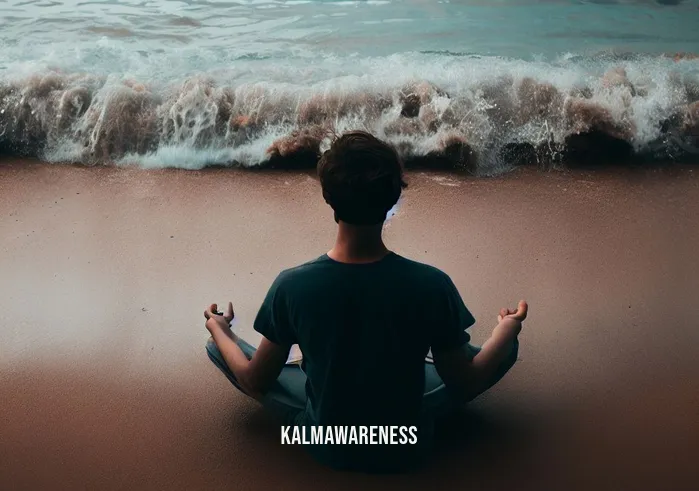
The Zen of Reclining: Final Musings on Lying Down Meditation
Where We Began and Where We Are Now
It’s been an enlightening journey exploring the depths of the question, “Can you meditate lying down?” Along the way, we’ve unspooled the intricacies of this practice, from its roots in relaxation and mindfulness to its applications in our daily lives. With a focus on sustainable self-care, lying down meditation offers a comfortable, accessible alternative to traditional seated meditation, ensuring that each one of us can find a way to tune into ourselves, irrespective of physical limitations.
Adding Science to the Mix
Although we dedicated the previous chapter to understanding the scientific angle of this meditative practice, it bears repeating that lying down meditation holds its weight even in the realm of academic scrutiny. The emotional and psychological benefits it offers are aligned with the ultimate aim of meditation, which involves attaining a peaceful state of mind in which thoughts are not occupied by worry.
Our Personal Favorites: The Peaks of This Journey
Remember when we discussed the role of mindful hypnobirthing and how lying down meditation could be a game-changer for expectant mothers? Or how about the time we delved into Jack Kornfield’s Meditation for Beginners, a testament to the universal accessibility of this practice? These were just a few of the peaks in our exploration, and each one brought us closer to understanding the multifaceted beauty of meditating in a prone or reclining position.
An Invitation to Keep Exploring
If this series has intrigued you, our work here is done! Well, almost. We encourage you to keep diving deeper. Perhaps you’ll find inspiration in learning how to spell stabilize your emotions or maybe you’ll find hope in practicing meditation made simple techniques. Whatever path you choose, remember, the journey is just as important as the destination.
The Curtain Closes But the Stage Remains
It’s not “goodbye”; it’s “see you later.” We’re constantly curating and creating more insightful content that we can’t wait to share with you. If you’re interested in additional themes like walking meditation for teenagers or diving into the nuanced world of rouse yoga, stay tuned for our future editions.
A Heartfelt Thank You!
Before we sign off, we want to extend a heartfelt thank you for accompanying us on this insightful journey. We hope this series has answered your query: “Can you meditate lying down?” with a resounding “Yes, you can!” Your curiosity fuels our work, and we are excited to journey with you through the endless realms of mindfulness, relaxation, and well-being in our upcoming features.
So go ahead, lie down, take a deep breath, and just be. The universe, after all, is right where it needs to be—and so are you.

